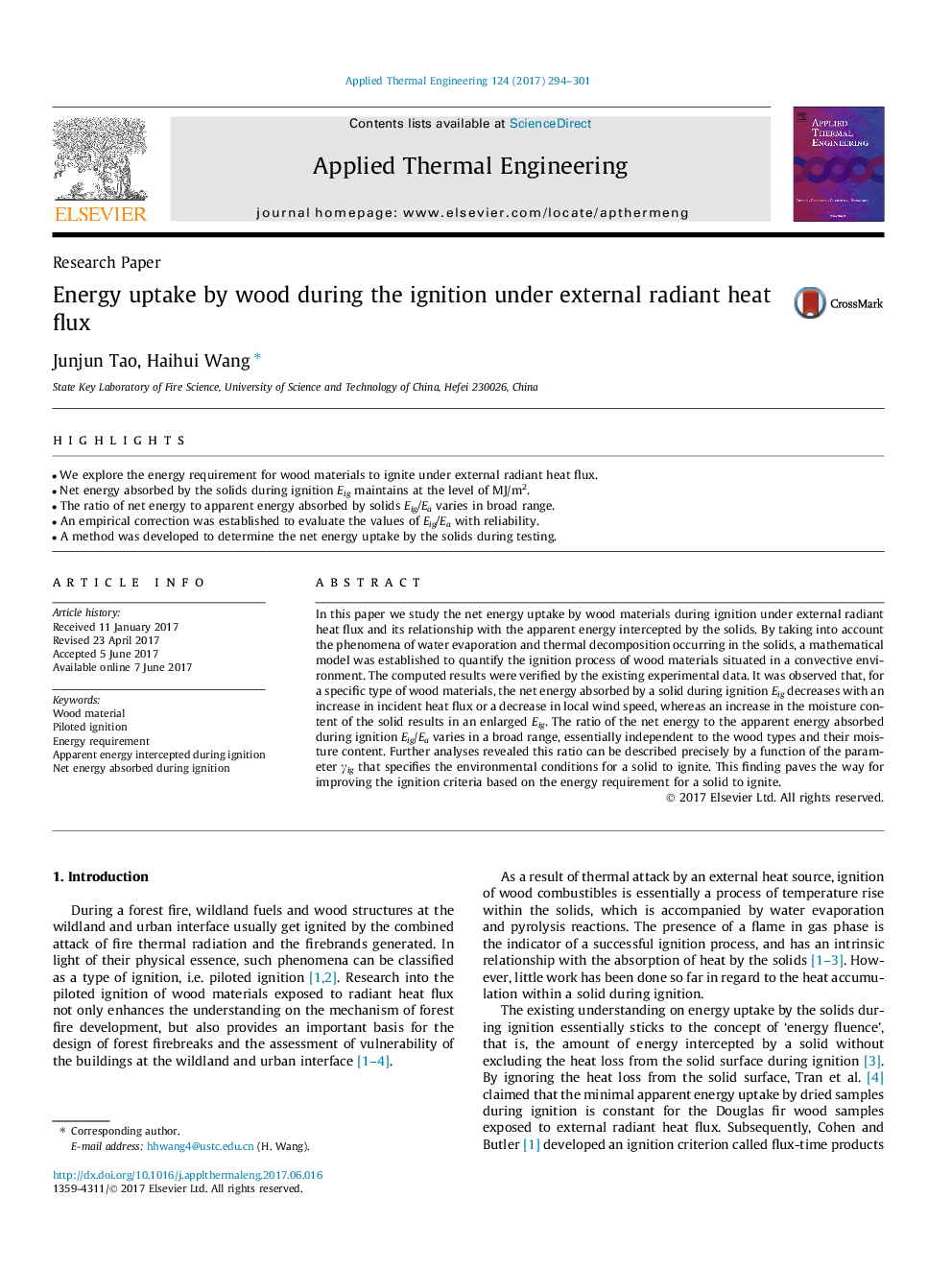| Article ID | Journal | Published Year | Pages | File Type |
|---|---|---|---|---|
| 4990615 | Applied Thermal Engineering | 2017 | 8 Pages |
Abstract
In this paper we study the net energy uptake by wood materials during ignition under external radiant heat flux and its relationship with the apparent energy intercepted by the solids. By taking into account the phenomena of water evaporation and thermal decomposition occurring in the solids, a mathematical model was established to quantify the ignition process of wood materials situated in a convective environment. The computed results were verified by the existing experimental data. It was observed that, for a specific type of wood materials, the net energy absorbed by a solid during ignition Eig decreases with an increase in incident heat flux or a decrease in local wind speed, whereas an increase in the moisture content of the solid results in an enlarged Eig. The ratio of the net energy to the apparent energy absorbed during ignition Eig/Ea varies in a broad range, essentially independent to the wood types and their moisture content. Further analyses revealed this ratio can be described precisely by a function of the parameter γig that specifies the environmental conditions for a solid to ignite. This finding paves the way for improving the ignition criteria based on the energy requirement for a solid to ignite.
Related Topics
Physical Sciences and Engineering
Chemical Engineering
Fluid Flow and Transfer Processes
Authors
Junjun Tao, Haihui Wang,
